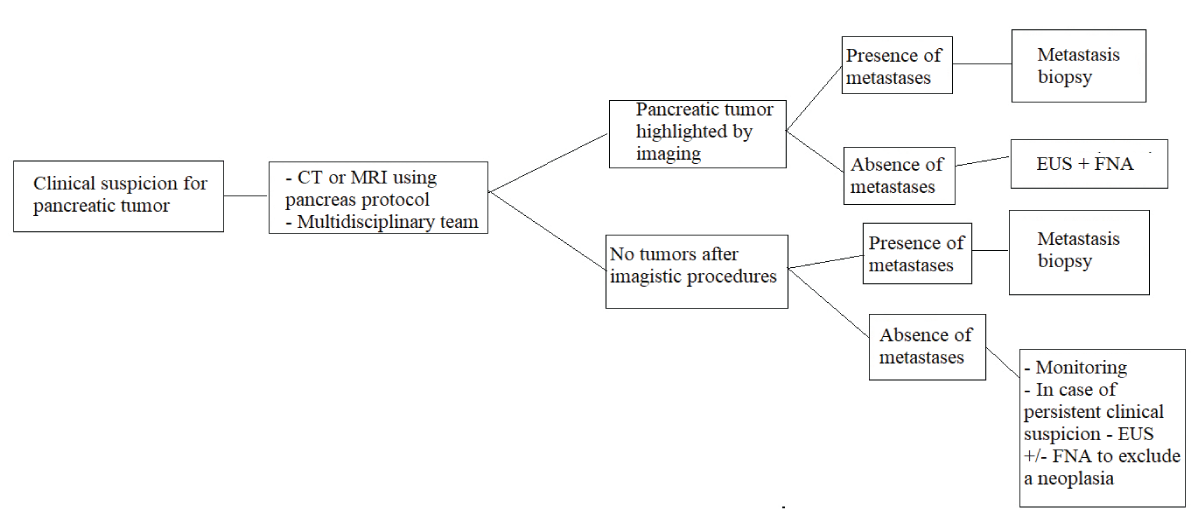Diagnostic Challenges in Pancreatic Tumors
Overcoming Diagnostic Challenges in Pancreatic Tumors
Pancreatic tumors are among the most complex and lethal forms of cancer, with both incidence and mortality rates rising globally. Despite advancements in diagnostic tools, the ability to detect and classify pancreatic tumors accurately remains a significant challenge. This blog post explores the insights and findings from the research article “Diagnostic Challenges in Pancreatic Tumors” and its associated DOI reference.
Introduction to Pancreatic Tumors
Pancreatic tumors encompass a wide range of classifications, including benign, malignant, exocrine, endocrine, and mixed-origin tumors. Early detection is crucial but difficult due to the asymptomatic nature of many pancreatic tumors in their initial stages. This delay in diagnosis often results in detection at advanced stages when treatment options are limited.
Diagnostic Challenges
1. Clinical Challenges
- Non-Specific Symptoms: Early signs such as abdominal pain, nausea, and fatigue are often misattributed to other gastrointestinal or cardiovascular conditions.
- Advanced Stage Diagnosis: Over half of malignant pancreatic tumors are diagnosed after metastasis, with only 8% detected in localized stages(igmin185).
2. Biological Diagnosis
- Markers with Limitations: Cancer antigen 19-9 (CA 19-9) is a commonly used biomarker with 90% sensitivity and specificity in symptomatic cases. However, it is not suitable for screening due to low positive predictive value (0.5%-0.9%) and interference from other conditions, such as inflammation(igmin185).
- Emerging Biomarkers: New studies focus on genetic micro-sequences and markers like macrophage inhibitory cytokine 1 (MIC-1), which show promise in early detection when combined with CA 19-9 levels.
3. Imaging and Technological Challenges
- Imaging Modalities: Computed tomography (CT) and magnetic resonance imaging (MRI) remain the primary tools, but their sensitivity varies based on tumor size and type.
- Limitations: Focal pancreatitis and autoimmune pancreatitis often mimic pancreatic cancer on imaging, complicating differential diagnoses. Advanced techniques like endoscopic ultrasound (EUS) with fine needle aspiration (FNA) are needed for more precise evaluation.
Advancements in Diagnostic Techniques
1. Biomarker Development
Emerging biomarkers such as MIC-1, chromogranin A, and neuron-specific enolase are being explored for their potential to detect pancreatic neuroendocrine tumors and adenocarcinomas earlier and more accurately.
2. Imaging Innovations
- Multi-Detector CT (MDCT): Enhances tumor detection, staging, and resectability evaluation, particularly for mesenteric and vascular involvement.
- MRI with MR Cholangiopancreatography (MRCP): Offers superior resolution for detecting ductal and parenchymal changes.
3. Endoscopic Techniques
- Endoscopic Ultrasound (EUS): Provides high-resolution imaging, particularly for small tumors (<3 cm), with sensitivity up to 98%.
- EUS Elastography: Measures tissue elasticity to differentiate malignant from benign masses.
- EUS with Contrast: Improves sensitivity (94%) and specificity (89%) in diagnosing pancreatic cancer.
Screening and Early Detection Strategies
Screening high-risk groups, such as individuals with familial pancreatic cancer or hereditary syndromes, is a priority. However, these groups represent only 5%-10% of all pancreatic cancer cases. Emerging strategies include:
- Diabetes Correlation: Early glucose intolerance or diabetes onset can indicate pancreatic cancer in its resectable stages.
- SPACE Technique: Serial pancreatic juice aspiration cytologic examination during endoscopic procedures is under investigation for its diagnostic utility.
Current Challenges and Future Directions
Challenges
- Limited availability of advanced diagnostic tools in low-resource settings.
- Variability in the sensitivity and specificity of biomarkers and imaging modalities.
- High costs and accessibility barriers for procedures like EUS and PET/CT.
Future Focus
- Development of cost-effective, non-invasive screening tests.
- Integration of artificial intelligence for enhanced imaging interpretation and biomarker analysis.
- Improved accessibility of diagnostic algorithms to bridge gaps in healthcare equity.
Conclusion
Diagnosing pancreatic tumors early and accurately is critical for improving patient outcomes. The integration of advanced imaging, innovative biomarkers, and multidisciplinary approaches is paving the way for significant progress in this field. As ongoing research addresses current limitations, the hope for earlier detection and effective treatment of pancreatic tumors grows stronger.
Tags
- Pancreatic Tumors
- Cancer Diagnosis
- Biomarkers
- Endoscopic Ultrasound
- CA 19-9
- Pancreatic Cancer Screening
- Imaging Technology
- Oncology Research

Figure: Algorithm for the diagnosis of pancreatic tumors; CT: Computed Tomography; MRI: Magnetic Resonance Imaging; EUS: Endoscopic Ultrasonography; FNA: Fine Needle Aspiration; reproduced after
